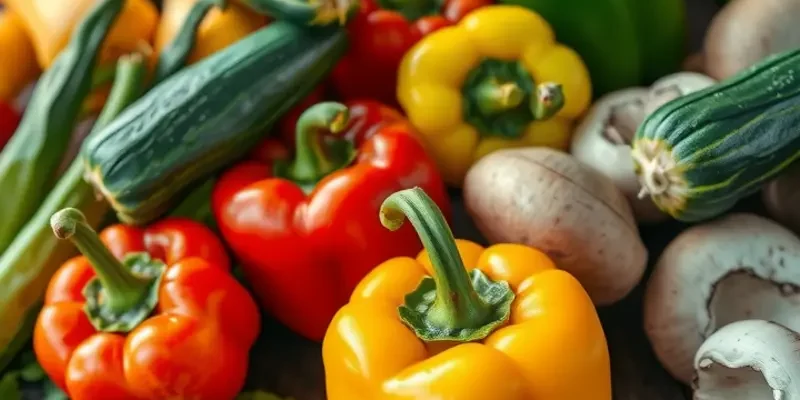Preparing tender grilled vegetables is a delightful skill that transforms ordinary produce into stunning side dishes or light meals. Grilling not only enhances the flavors but also brings out the natural sweetness of the vegetables. Whether you’re a beginner or a more experienced home cook, learning how to grill vegetables can elevate your culinary repertoire. This guide will share practical tips and techniques, ensuring that your grilled vegetables turn out perfectly every time.
Choosing the Right Vegetables for Grilling

The key to exceptional grilled vegetables lies in selecting the right ones based on their flavor, texture, and grilling time. Each vegetable behaves differently under heat, so understanding these differences helps achieve the best results.
When it comes to flavor, think about vegetables that transform under heat. Asparagus, bell peppers, zucchini, mushrooms, and onions are top choices. Their natural sugars caramelize beautifully, yielding a deep, smoky sweetness that enhances any dish. For a slight peppery kick, add some eggplant to your grill. These vegetables offer a robust taste that stands out when charred.
Texture is another important factor. Firm vegetables, like carrots and corn, hold their shape and provide a satisfying bite after cooking. Softer vegetables, such as tomatoes, grill better with careful attention to grilling time to avoid them turning mushy. Properly selecting vegetables based on their texture ensures they maintain structural integrity and appeal when cooked.
Grilling time is crucial for achieving that perfect tender-crisp bite. To begin, dense vegetables like potatoes should be parboiled or cut into thin slices so they grill quickly and evenly. Vegetables like zucchini and bell peppers need only a short time on the grill, about 5-10 minutes, to fine-tune their wonderful textures and flavors. Make sure to monitor vegetables closely, flipping them as needed.
Preparation also plays a vital role. Most vegetables benefit from a marinade or a light coating of oil. Olive oil, seasoned with garlic or herbs like rosemary, infuses the vegetables with aromatic flavors while preventing them from sticking. Be sure to cut vegetables into uniform pieces; this ensures they cook at the same rate. Skewering smaller vegetables can also simplify handling while grilling.
Avoid crowding your grill to allow each piece of produce to cook uniformly and absorb the smoky essence. When grilling in batches, keep cooked vegetables warm by placing them in a covered dish before serving.
For those exploring plant-based eating, pairing grilled vegetables with grains or legumes can create a nourishing, complete protein meal. You might find further ideas in this guide on easy plant-based eating.
By choosing the right vegetables and understanding how to prepare them properly, you can turn a simple meal into a delightful culinary experience. The flavors captured from grilling create a celebration of fresh produce, harnessed by mindful selection and preparation.
Grilling Techniques for Perfectly Tender Vegetables

Grilling vegetables transforms their natural flavors into a delightful symphony. Techniques matter when seeking perfectly tender results that retain a pleasant bite. Key aspects include marinating, seasoning, and optimal cooking times.
Marinating is a powerful way to enhance flavor and tenderness. A simple marinade might include olive oil, balsamic vinegar, minced garlic, and herbs like thyme or rosemary. Allow your vegetables to soak for at least 30 minutes; this aids in breaking down fibers, making them tender on the grill.
For seasoning, simplicity is often best to let the vegetables’ character shine through. Season generously with salt and freshly cracked black pepper before grilling. You can also experiment with spice blends, combining paprika, cumin, or coriander for a more exotic touch. Season immediately after marinating to allow flavors to meld.
Timing is crucial when it comes to cooking vegetables on the grill. High heat is ideal but balance it with the correct cooking times to avoid charring or burning. Denser vegetables like carrots or potatoes often need a head start. Pre-cooking them briefly can help; parboiling works well. Try grilling these for approximately 8–10 minutes per side.
For more delicate options such as asparagus or bell peppers, a quick sear works best. Aim for 4–6 minutes per side to achieve a beautiful, tender interior and a slight char on the outside. Always keep a close eye as the difference between perfect and burnt is often just moments.
Practical advice also includes not overcrowding the grill. Give each piece of vegetable enough space to ensure even cooking. Using a grilling basket can help, especially if you’re working with smaller vegetables that may slip through the grates.
Different vegetables can enhance your meal in unexpected ways. To explore more about adding flavors to your dishes without extra salt, take a glance at this flavor boosters without salt guide. It offers interesting insights that you can integrate with your grilling techniques.
Incorporate these techniques and elevate your grilled vegetables from ordinary side dish to the star of your meal. Equip yourself with these strategies, and you’ll consistently impress with vegetables that are not just grilled, but perfectly tender and bursting with flavor.
Final words
Mastering the art of grilling tender vegetables is both rewarding and delicious. By choosing the right produce, applying the proper techniques, and experimenting with flavors, you can create dishes that impress. Not only do grilled vegetables bring a vibrant touch to your meals, they also pack a nutritious punch. So grab your grill, select your favorite vegetables, and enjoy the simplicity and satisfaction of creating wonderful grilled dishes at home!







